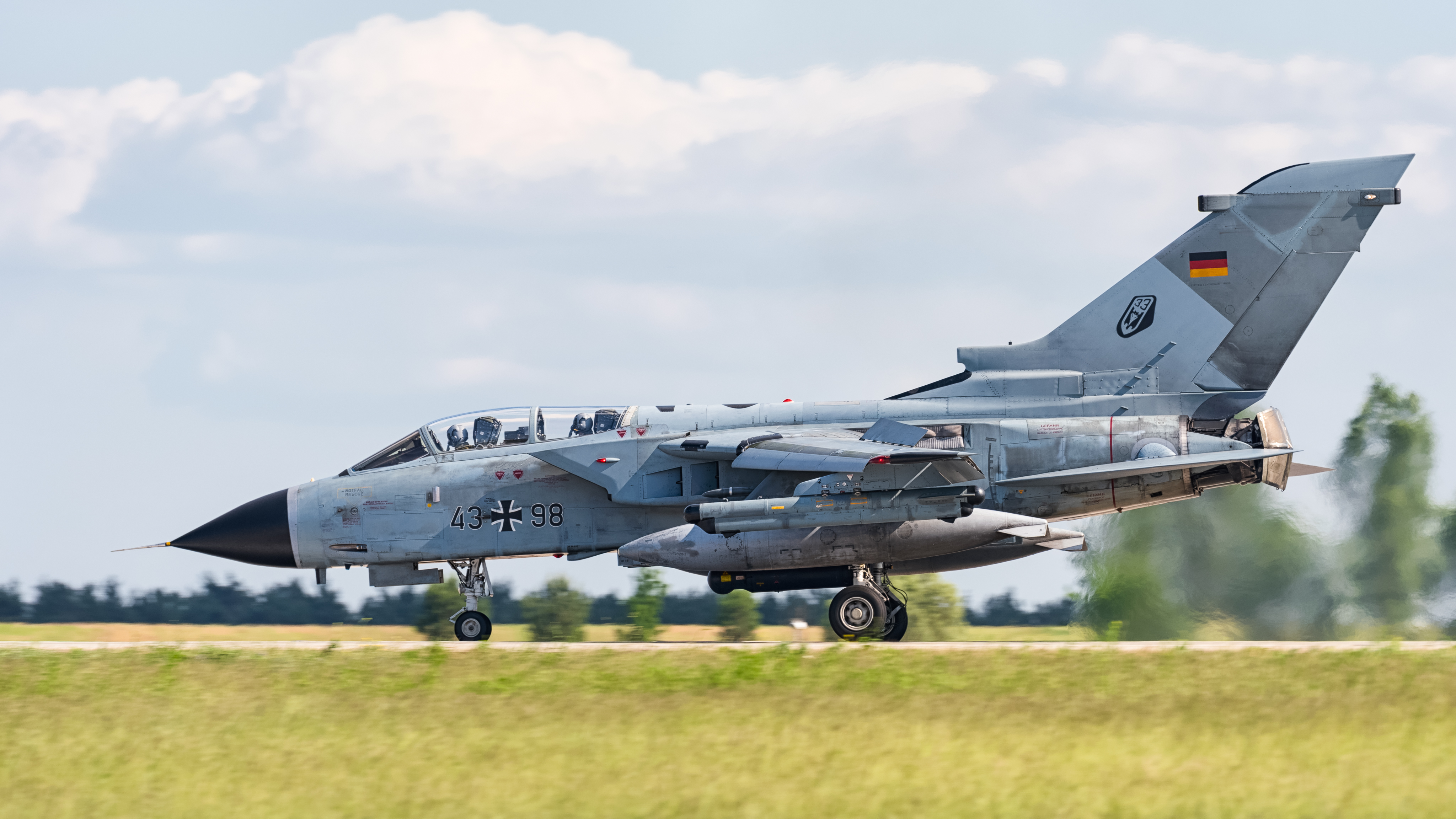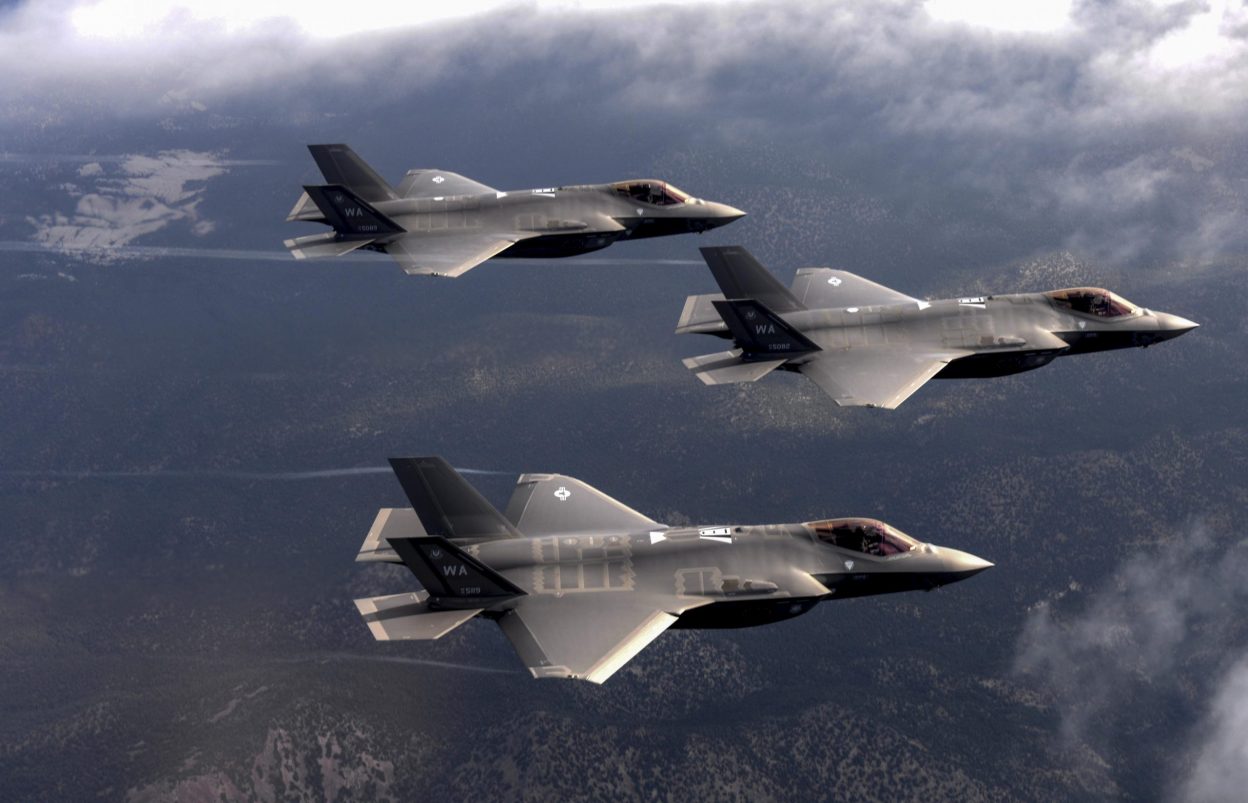The newly elected German government is reportedly considering the Lockheed Martin F-35 as a potential replacement for the Panavia Tornado.
The country’s new Defence Minister Christine Lambrecht told Chancellor Olaf Scholz on January 8 that the previously discounted F-35 and overlooked Eurofighter ECR were once again being viewed as replacements for the Luftwaffe’s Panavia Tornado Interdiction and Strike/Electronic Combat Reconnaissance aircraft, Deutsche Presse-Agentur reported.
“The aim is to clarify again whether buying the more modern F-35 aircraft could be an alternative, and whether the Eurofighter [Electronic Combat Role (ECR)] could [also] be considered for a second task for the Tornado fleet [of] electronic combat,” Lambrecht was reported by the Deutsche Presse-Agentur to have told Scholz.

The Panavia Tornado strike aircraft is the assigned aircraft of the Luftwaffe to deliver the 20 US-made B61 nuclear bombs stockpiled in Germany as part of NATO nuclear sharing.
The German Air Force, however, has been hunting for a suitable replacement for the outdated Tornado since 2017, which is now too old to be engaged in NATO missions. The Tornado aircraft is scheduled to be retired from active service in 2025.
Germany, along with Belgium, Italy, Turkey, and the Netherlands, is responsible for NATO’s “nuclear delivery,” and it holds 20 American-designed B61 free-fall nuclear bombs in its arsenal. The Luftwaffe approved several of its Panavia Tornado for the nuclear strike mission.
Replacement for Tornado
The Eurofighter Typhoon was considered at first, but the United States reportedly indicated that certification would take three to five years. That timeline would be out of date, as the German Tornados are scheduled to retire by 2025.
In mid-2017, the former Chief of the Luftwaffe sent the US military a written request for classified data on the Lockheed Martin Corp F-35 fighter jet to evaluate the capabilities of the fighter jet to take over from the Tornado.
The Air Force’s evident preference for a stealthy aircraft, on the other hand, clashed with the German government’s desire for an all-European solution based on the Eurofighter.

The Lockheed Martin F-35A was also ruled out since its purchase would have rendered the Future Air Combat System (FCAS), which Germany pledged to build together with France and Spain, irrelevant.
In April 2020, Germany later reportedly decided to procure 30 F/A-18 Super Hornets with the capability to deliver B61 bombs and 15 EA-18G Growler electronic warfare variants.
However, the purchase of the Super Hornet was postponed until after the German federal election in October 2021, as the country’s nuclear weapons stockpile has been a point of contention during the campaign. The newly formed German coalition reiterated Germany’s commitment to NATO’s nuclear deterrent capabilities in November 2021.
Why is Germany looking at F-35 and Eurofighter ECR?
The advantage, shorter certification processes and expenses for the use of the B61 bomb, afforded by the Luftwaffe adopting that model was clouded once it became clear that the US Navy would not designate its F/A-18 Super Hornet for nuclear assault at a later date.
On the other hand, Airbus announced an ECR SEAD (Electronic Combat Role – Suppression of Enemy Air Defenses) variant of the Eurofighter Typhoon in 2019. The fighter is capable of taking an electronic warfare role due to multiple specialized pods.
The German defense industry, led by Airbus Defence and Space, had pushed against the F-18 Growler being chosen for the electronic-attack role, believing that the Eurofighter could be upgraded to a similar level of capabilities.

According to DPA, these issues have prompted Christine Lambrecht, Germany’s new defense minister, to reconsider the Lockheed Martin fighter’s suitability for nuclear deterrence operations.
Lambrecht notified Chancellor Olaf Scholz that she would conduct research to see if the F-35A can carry out the Tornado’s nuclear tasks, as well as whether the Airbus plan for the Eurofighter ECR is adequate.
As a result, the F-35A looks to be on the table once more. Several proofs of concept were undertaken following a meeting between Chancellor Olaf Scholz and Federal Defense Minister Christine Lambrecht on the Tornado’s successor.
Moreover, the F-35A is already undergoing nuclear certification. The US Air Force successfully accomplished the first weapon system demonstration in October 2021 by dropping B61-12 Joint Test Assemblies (JTAs) from two F-35A fighters.
Meanwhile, merely bringing up the F-35 again in German discussions, much alone talking about it, might cause French officials to doubt Berlin’s commitment to the Future Combat Air System. As a result, not just the sixth-generation aircraft program, but the European Union’s defense-industrial objectives as a whole, could be jeopardized.
- Contact the author at ashishmichel@gmail.com
- Follow EurAsian Times on Google News




